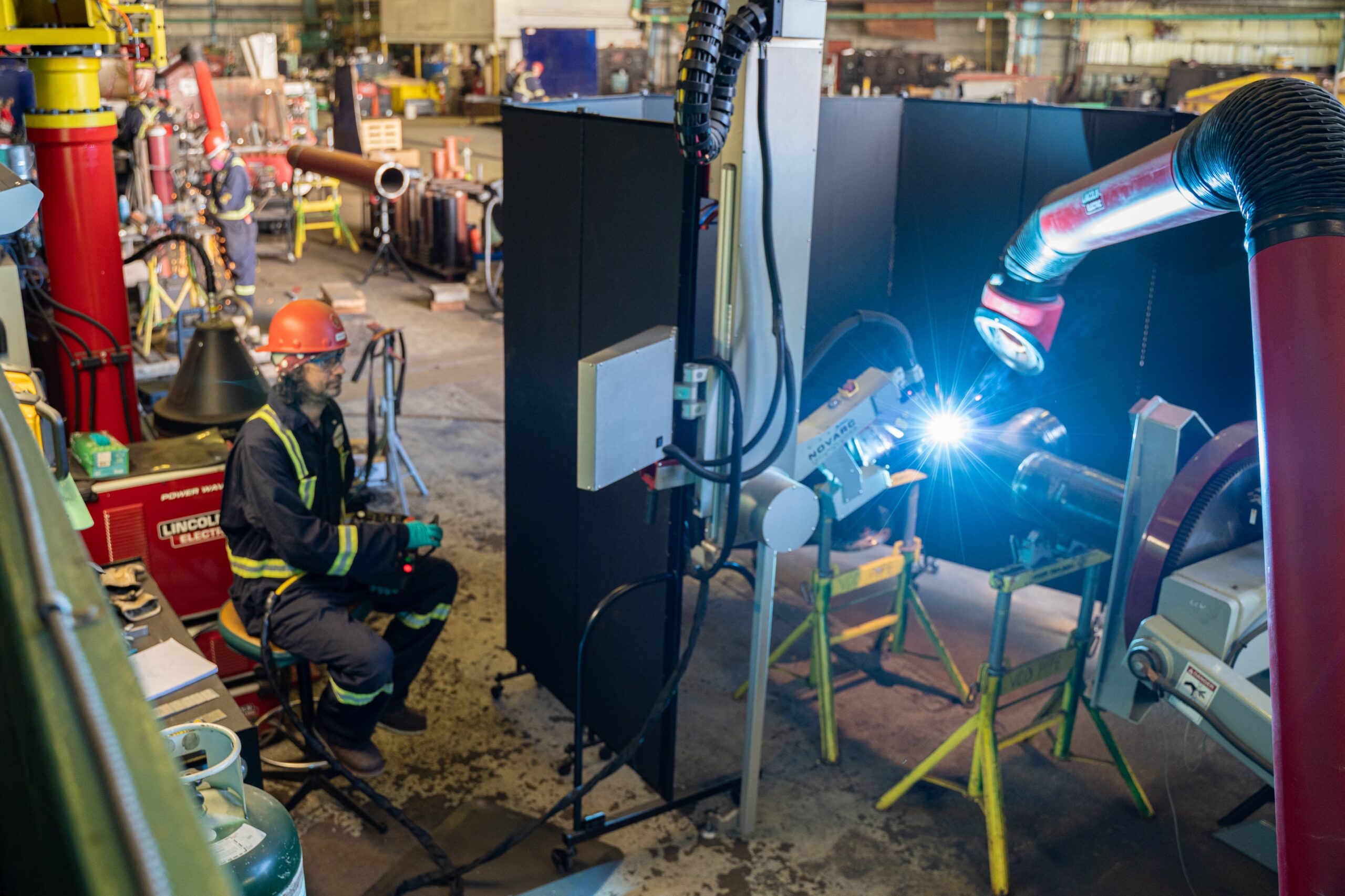The following is an excerpt originally published on Australian Welding written by Mahyar Asadi, VP of Innovation at Novarc
An Answer to Welding Industry Productivity Pressure and Welder Health and Safety
As technology continues to pick up speed at an unprecedented pace, the welding and fabrication industry is not immune to the pressure to innovate to meet the demand to supply key components (such as pipes and tanks) to build the world’s infrastructure. According to Infrastructure Australia’s third annual Infrastructure Market Capacity Report, released in December 2023, “investment in both regional areas and the energy sector is expected to grow to between three and four times its current level, with cross-sectoral demand placing ongoing pressure on market capacity”. Labour is a key issue “with a shortage of 229,000 full-time infrastructure workers predicted as of October 2023”, compounded by the fact that “local materials cannot meet demand, particularly in steel and quarry products”. However, the report states there is “an opportunity to increase domestic capacity and markets through low-emission construction materials”. The good news is that within the
traditional industry of welding, by deploying software and automation to a process that is performed manually, there is a solution to the current labour challenges, with the added value of enhanced safety for the welders. From the bottom line, automation has streamlined processes, enhancing efficiency, and improving overall
productivity in welding operations. As an example, Novarc’s collaborative welding technology, the Spool Welding Robot (SWR)TM is not only providing a solution to the labour gap, but is also providing a collaborative solution (where the human welder works with the robot). This allows more precision, safer welds, enhanced productivity and a cleaner, greener process. Welding is a core process in most greenhouse gas intensive industries in Australia including oil and gas, and mining. Unfortunately, there are significant environmental impact concerns:
• Welding fumes emit carbon dioxide, carbon monoxide, and ozone, the main drivers of global warming and climate change.
• Welding releases metal pollutants to the air such as vaporised heavy metals and oxides from the molten puddle.
• Welding processes take a large amount of energy during every weld, imposing a significant burden on the energy system.
From an environmental perspective, these concerns are being brought to the forefront as Australia has a 2030 emissions target of a 43% reduction below 2005 levels, and an ambitious target to achieve net zero emissions by 2050. From a health and safety perspective, there are heightened concerns about welders. Safe Work Australia recently announced that Work Health and Safety Ministers have agreed to an immediate reduction in the workplace exposure standard for welding fumes,
from an 8-hour time weighted average (TWA) of 5 mg/m3 to 1 mg/m3. As the exposure standard for welding fumes has been reduced, all necessary controls now must be implemented to meet this higher standard.
